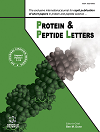
Full text loading...

Neurodegenerative disorders such as Alzheimer's, Parkinson's, and ALS are characterized by progressive neuronal dysfunction with limited therapeutic options. Recent advances in molecular biology and drug development have highlighted the therapeutic promise of precision enzyme targeting, offering novel strategies for disease modulation and symptom management.
A comprehensive literature review spanning recent/current was conducted using PubMed, Scopus, and ScienceDirect. Studies focusing on enzyme-based targets, high-throughput screening, and molecular docking in neurodegeneration were included. Thematic synthesis was employed to categorize findings based on enzyme class, disease relevance, and therapeutic outcomes.
Key enzyme families such as kinases, proteases, and oxidoreductases were identified as pivotal modulators in disease progression. Emerging enzyme-targeted compounds demonstrated enhanced bioavailability, blood-brain barrier permeability, and disease-specific efficacy. Novel screening platforms and computational modeling enabled the precise selection of inhibitors, significantly improving the therapeutic index and reducing off-target effects.
Targeting enzymes implicated in neuroinflammation, oxidative stress, and protein misfolding has shown disease-modifying potential. Integrating precision drug discovery tools, such as AI-assisted modeling and enzyme kinetics, supports rational drug design. However, translational challenges persist due to variability in enzyme expression and disease heterogeneity.
Future research should focus on refining enzyme inhibitors and integrating biomarkers to facilitate personalized treatment strategies for neurodegenerative disorders. As the understanding of enzymatic roles in neurodegeneration deepens, precision enzyme-targeted drug discovery holds significant promise in transforming neurotherapeutic approaches.

Article metrics loading...

Full text loading...
References


Data & Media loading...